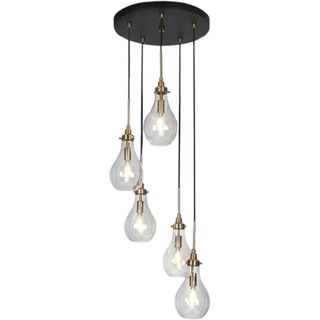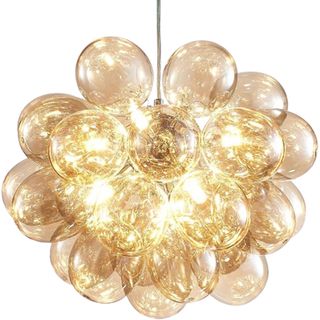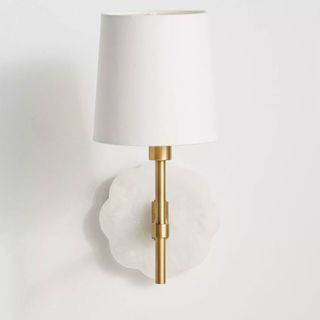How to Plan Your Entryway Lighting — For a Foyer That Makes a Good First Impression
Lighting experts give us the lowdown on how you can illuminate your home while elevating your space
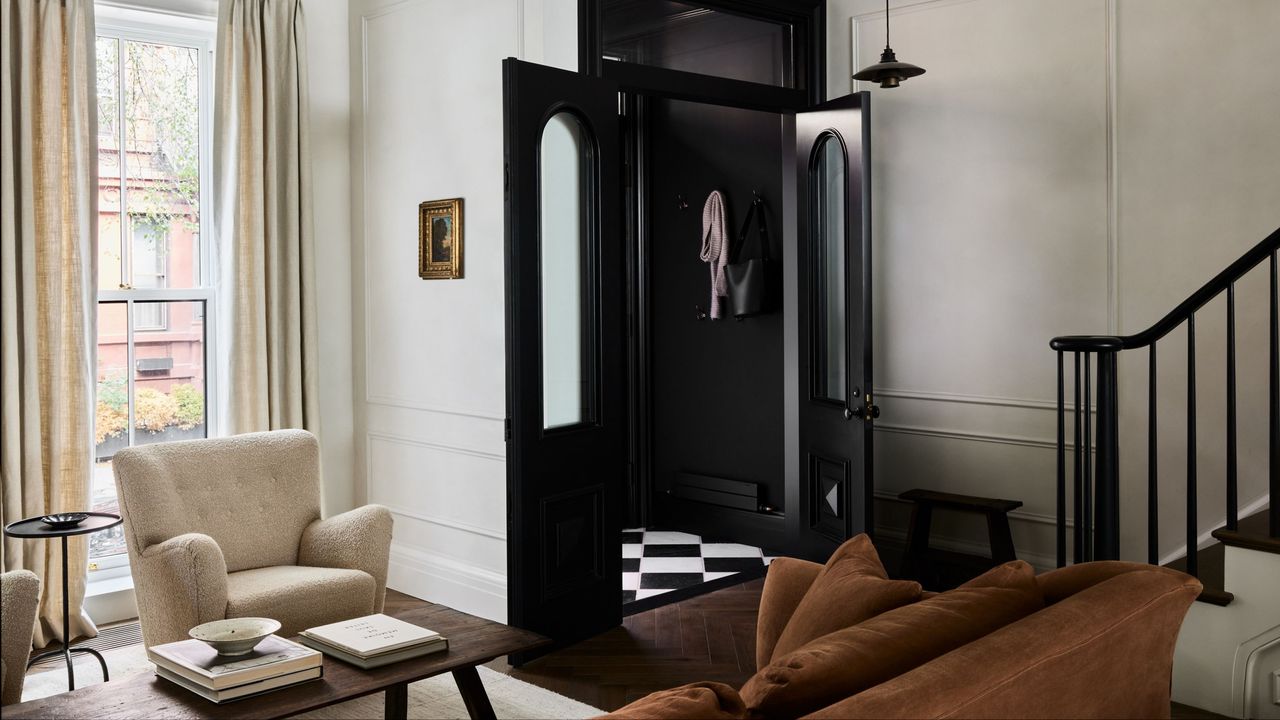
- 1. Start With Bold Fixtures
- 2. Add Layers to Your Background Lighting
- 3. Use Your Lighting to Direct Guests Into the House
- 4. Use Wall Lights to Add Depth to the Space
- 5. Use Dimmers to Allow For a Flexible Approach
- 6. Make the Most of Natural Light
- 7. Use Smart Lighting for Added Security
- 8. Get the Ambience Right Through Color Temperature
- FAQs

As the first space you walk into when entering your home, getting your entryway lighting design right is vital. The entryway should bring in a sense of calm at first glance and lighting plays a big role. It's what sets the mood, draws attention to a space, and ultimately highlights the areas you love most.
Entryways also tend to be hotspots in the house and are often thrown into slight chaos at certain times of the day — especially during the morning rush to get out the door. With all this in mind, it is key to ensure your entryway lighting ideas not only facilitate this space's functional role in providing a transition between inside and out but also help it feel warm and inviting, to you and your guests.
Here, with the help of our experts, we go into detail about how you should plan your entryway lighting to bring in an effortless and cohesive feel within the home. Here's what the professionals have to say about all things lighting.
1. Start With Bold Fixtures
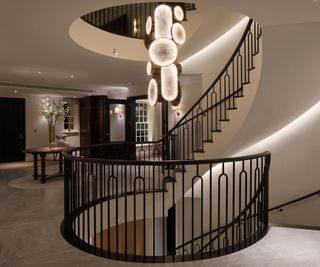
An entryway is the very first impression guests get of the inside of your home as they walk through the door — and your choice of light fittings has the potential to bowl them over. They can also help when it comes to how to make an entryway look more expensive.
"Start with a statement fixture like a pendant or chandelier. This is your 'wow' moment as someone walks in, and it catches the eye and establishes the style of your home," explains James Marino, general manager at Pinnacle Home Improvements. "I remember working on a project where the homeowner chose this stunning oversized lantern-style pendant for their entryway. It not only elevated the space but also tied in perfectly with their home's modern farmhouse vibe."
"Start with big lights," agrees Dara Greaney, founder and CEO of LEDLightExpert.com. "Find a big overhead fixture, like a chandelier or pendant, for general illumination and to match and define your style (old world, modern, farmhouse, and so on.) The best fixtures are the ones that draw the right attention or complete the space."
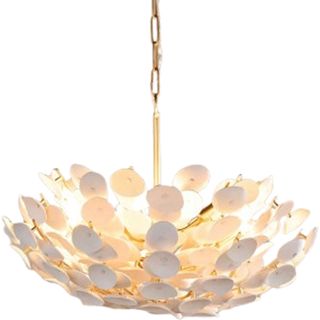
Price: $3,190
Made from little discs of white-washed cocoa shells, this unusual yet beautifully delicate chandelier would make an instant impact in an entryway and ensure a good spread of light.
2. Add Layers to Your Background Lighting
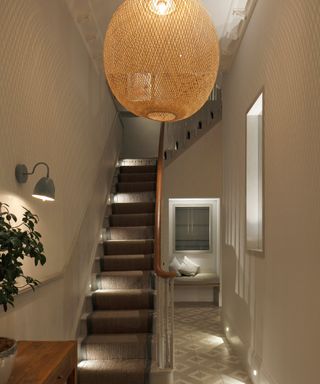
We often talk about "layers of light," and put simply, what this means is combining more than one type of light in the same space to deliver a range of different lighting effects. For example, table lamps are used for targeted task lighting, pendants for general ambient lighting, and hidden LEDs for accent lighting.
Using layers of light as part of your entryway ideas is just as important as it is in other rooms in the house. "The hallway is your guest's first impression of your home, setting the tone for the rest of the interior," says Luke Thomas, design director at John Cullen Lighting. "Make it memorable by focusing on layered lighting effects that prioritize drama over symmetry."
But how exactly do you implement this? Luke has a few tips. "A decorative pendant or lantern is an excellent way to establish the visual tone of your hallway, but when used in conjunction with architectural lighting, this will really create the atmosphere and drama," explains Luke. "Use downlights alongside the pendant to spotlight a picture, or a narrow beam to highlight flowers on a console."
"After your centerpiece, think about adding practical lighting," suggests James Marino. "Wall sconces can work wonders if you’ve got a narrow hallway, offering a softer, more ambient glow that complements the overhead light. And don’t underestimate the power of a well-placed table lamp if you’ve got a console table. It adds a cozy touch and is an easy way to layer lighting without making the space feel stark."
You can even take things a step further if you want to go all out in your entryway. "To create an interesting contrast, use wall lights or recessed downlights to create a wash of light over one wall, while using floor washers on the other side of your hall," suggests Luke Thomas. "Think also of combining this with uplights to highlight architectural features such as doorframes or arches."
3. Use Your Lighting to Direct Guests Into the House
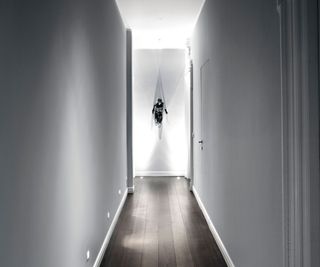
As a space that marks the transition between inside and out, it makes sense to use your entryway and hallway lighting ideas to point the way to the rooms that lie beyond, inviting guests in.
"Make sure the lights guide people naturally toward the main living area for a welcoming feel," says WG Hickman, owner at Tri-County Air Service. "To add a creative touch, install small guide lights in the floor or walls to lead guests to the living room or stairs, blending safety and style."
There are other ways to bring guests into the house too, and they can work particularly well if you are working with a small space as they detract from the proportions of the area. "Guide the eye down the hallway by emphasizing a feature or area in the distance," advises Luke Thomas. "This could be a half stairway or a decorative piece at the far end of the space. The eye naturally gravitates to the brightest point, so use lighting to make your chosen focal area stand out."
4. Use Wall Lights to Add Depth to the Space
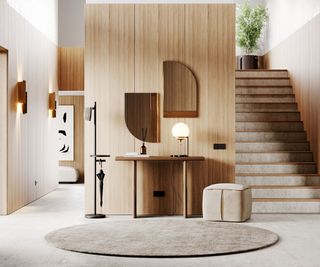
Unless you have a narrow entryway, wall lights can bring so much the space plus they can help with it comes to how to make an entryway feel cozy.
"If you’ve got wall space, sconces or picture lights are a great way to highlight artwork or details," explains Carolyn Cerminara, founder and principal designer at Cerminara Design.
Wall lights can not only be used to highlight decorative touches — they can also help when it comes to narrow hallways. "Wall sconces can work wonders if you’ve got a narrow hallway, offering a softer, more ambient glow that complements the overhead light," explains James Marino.
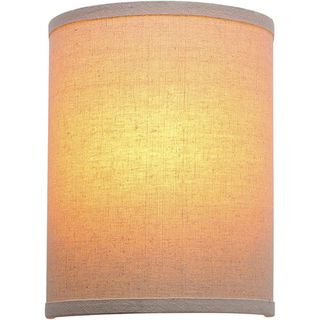
Price: $45.59, Was: $56.99
The fabric shade of this wall sconce creates a lovely soft glow, while the open-ended design means light will wash your walls with light.
5. Use Dimmers to Allow For a Flexible Approach
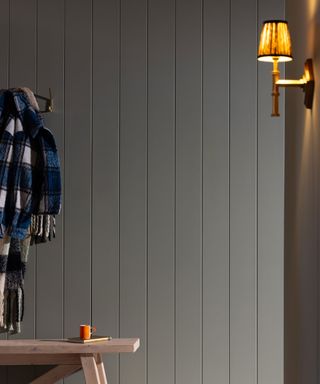
While you might have considered dimmers or smart lighting as a way of adjusting light levels in other rooms of your house, such as for your living room lighting ideas and in the bedroom, having control over this aspect in your entryway is important too.
"Dimmers are a game-changer here. They give you control over the mood — soft and subtle in the evening or brighter for more functional needs," explains James Marino. "In my own home, I installed dimmers in the entryway after realizing how much of a difference it makes. Now, the lighting adjusts with our schedule, whether it’s welcoming guests or winding down at night."
6. Make the Most of Natural Light
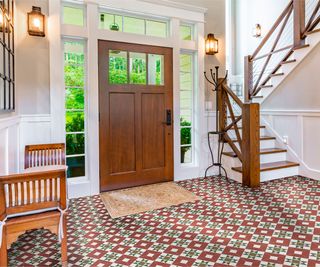
Entryways can often be one spot in the house that lacks a little in terms of natural lighting. While your artificial lighting can really help here, it is also wise to make sure you are doing everything you can with the natural light you do have in the space.
"Maximize natural light with mirrors and windows," suggests Dara Greaney. To help with this, consider fitting long, narrow sidelights to either side of your front door or a fanlight over it. This will bring light in without sacrificing your privacy.
Placing a mirror opposite any glazing will also help bounce the light about in the space. You could also look into the best paint colors for rooms without much natural light.
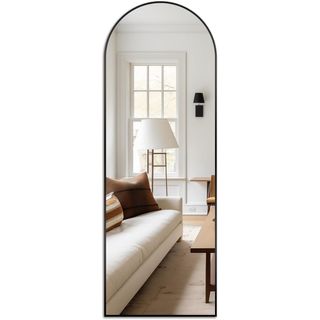
Price: $47.99, Was: $59.99
This simple arched mirror measures 56" high, making it a great floor-standing option for admiring your reflection as you leave the house and bouncing any natural light around your entryway.
7. Use Smart Lighting for Added Security
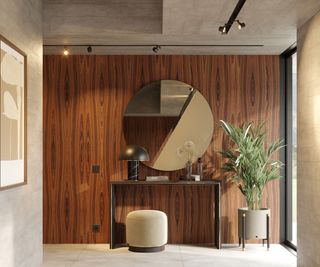
As lighting trends go, smart lighting is becoming increasingly popular with homeowners who want to ensure their homes feel in tune with their lifestyles and provide an added level of security.
Smart lighting systems, and even simple smart bulbs such as these Linkind Smart Light Bulbs from Amazon – can be set to come on at different times of the day to make it look as though someone is home even if you are out partying the night away.
They are also handy for greeting you home — it is never nice to return home to a dark entryway, but with smart lighting, you can set it to be on for your arrival. You could also set up your external lighting or just one light above your door to match your schedule.
8. Get the Ambience Right Through Color Temperature
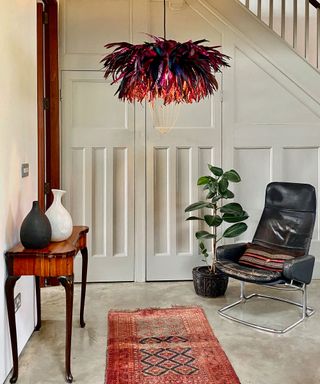
If you haven't given much thought to color temperature, then now is the time to start — it could have a huge effect on how your entryway looks and feels. Color temperature is measured in Kelvins, with warm being between 2700K-3000K, neutral at 3500K-4000K, and cool being 5000K-6500K.
Hallways need to be welcoming and warm but also bright enough to be practical— a cozy glow might be lovely to come home to after a long day, but it isn't so welcome when you are frantically hunting for your car keys first thing in the morning. For this reason, the entryway is a space in which to combine color temperatures. "Blending warm and neutral lights in the same space can be effective," says Angelique Kreller interior designer at Yabby. "Using warm lighting for ambient light and neutral lighting for task-oriented areas."
Smart lighting can also help here, adapting to the time of day and meaning you won't need to choose between cool light vs warm light. "Use lights that can change for different times of the day, like tuneable LEDs that shift from bright daylight in the morning to warm, cozy tones in the evening," suggests WG Hickman.
FAQs
How big should a light fixture be in an entryway?
If you want to make a statement to guests as soon as they walk into your home then an enormous pendant or chandelier is definitely a great start – but in a small hallway, this could be a mistake. You need to think about scale and proportion.
"If the space allows, oversized lighting can make a bold, dramatic statement and really welcome people into your home in an intentional way," says Carolyn Cerminara. "I personally love playing with scale – it’s all about finding a fixture that adds just the right amount of impact."
Of course, an oversized pendant isn't the only way to add drama. "If your entryway is more square and with lower ceilings, you can opt for a dramatic flush-mount or semi-flush mount light," says Victoria Holly, interior designer at Victoria Holly Interiors. "If you have more of a narrow entryway with taller ceilings, you can opt for pendant lights, such as grand lanterns."
What kind of light should you put in an entryway?
Just as when it comes to how to choose the right color for an entryway, there is no one-size-fits-all type of light that works best in the entryway – all the experts we spoke to agreed that a combination works best. And adjustable fittings are a must.
"The entrance to a home is a transition space between rooms so always make sure the lighting is installed is dimmable," instructs Luke Thomas. "The light should blend harmoniously with the adjacent spaces. For example, if your other rooms are softly lit, avoid jarring contrasts by ensuring your hallway lighting can be adjusted to match."
How far from the floor should a foyer light hang?
Pendant lights are often brought in for entryway makeovers, but if you are considering this, be sure to think about height — you don't want it getting in the way, yet hanging it too high can also be a mistake.
"If you hang your light too high in the entryway, you will not notice or be able to appreciate it," points out Charlie Bowles, director of British lighting manufacturer Original BTC. "It can also cause the pool of light to be wide with less focus on a particular area.
"Hanging the fixture too low may reduce the pool of light too much and prevent the rest of the space from being lit properly," warns Charlie. "You primarily need to think about head height: is the light positioned where people will be walking underneath it or into it if it is positioned too low? If the light casts an interesting shadow around the room, check to make sure you are happy with where those shadows fall and adjust the height appropriately."
Be The First To Know
The Livingetc newsletter is your shortcut to the now and the next in home design. Subscribe today to receive a stunning free 200-page book of the best homes from around the world.
Natasha Brinsmead is a freelance homes and interiors journalist with over 20 years experience in the field. As former Associate Editor of Homebuilding & Renovating magazine, Natasha has researched and written about everything from how to design a new kitchen from scratch to knocking down walls safely, from how to lay flooring to how to insulate an old house. She has carried out a number of renovation projects of her own on a DIY basis and is currently on the lookout for her next project.
-
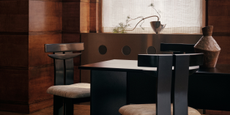 Japandi Decor Is the Cure to Chaos — 6 Buys That Will Instantly Bring This Style to Life
Japandi Decor Is the Cure to Chaos — 6 Buys That Will Instantly Bring This Style to LifeA fusion of Japanese and Scandinavian sensibilities, this distinct style strips away the noise in more ways than one
By Julia Demer Published
-
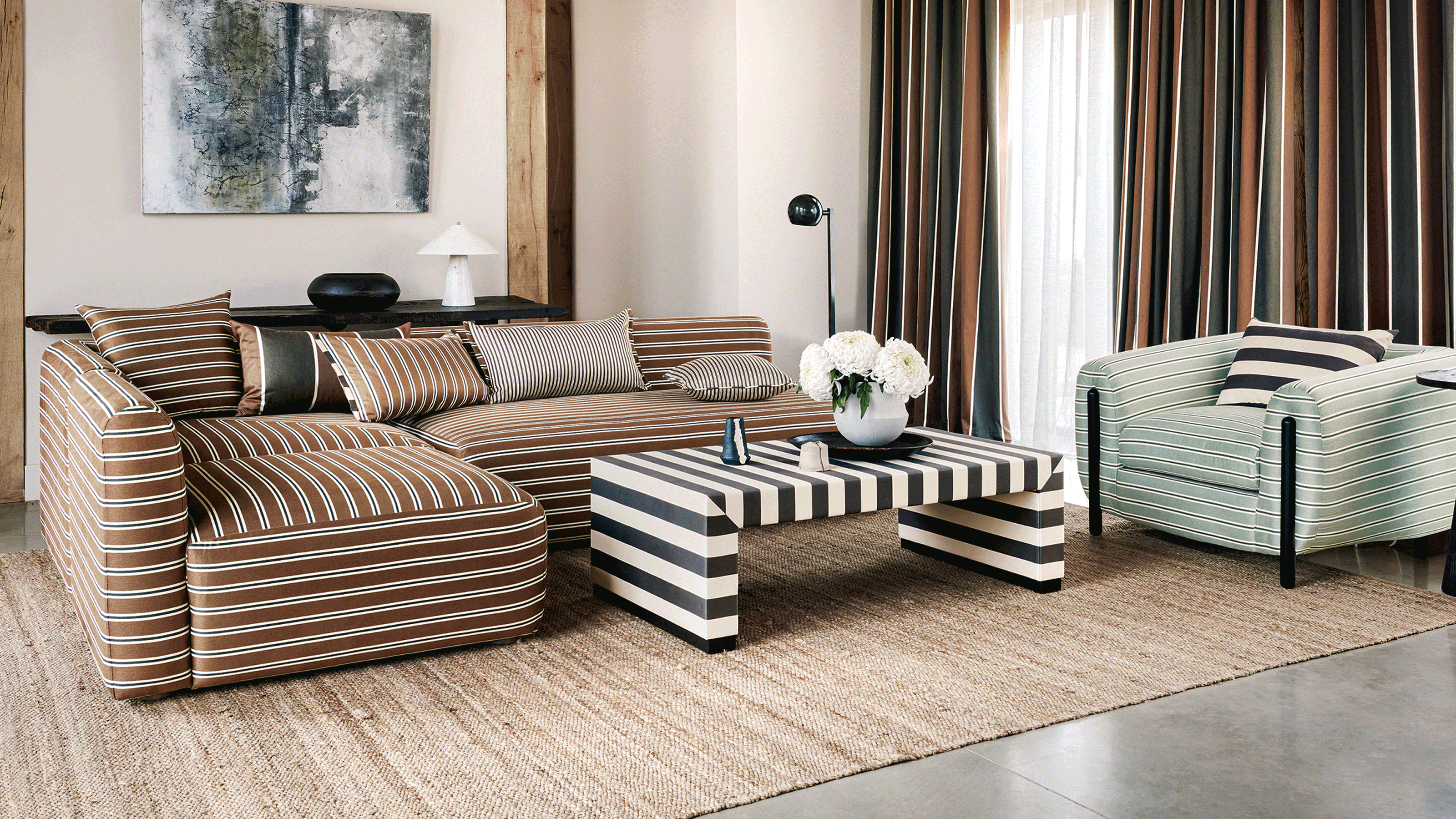 The Zeitgeist Edit — What's Exciting (and Not So Much) a Design and Culture-Obsessed Editor in March
The Zeitgeist Edit — What's Exciting (and Not So Much) a Design and Culture-Obsessed Editor in MarchFrom the new collections inspiring us to what to eat, drink, and read, here's our report on March, straight from the editor's desk
By Hugh Metcalf Published
-
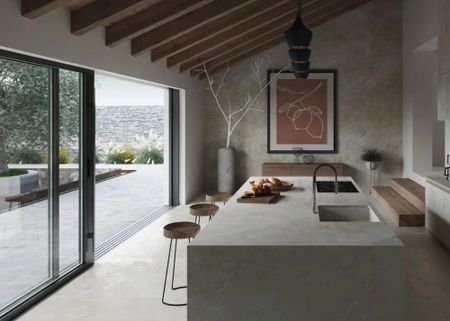 Bifold Doors Vs Sliding — Which Is the Best Way to Open Up Your Home?
Bifold Doors Vs Sliding — Which Is the Best Way to Open Up Your Home?Letting the light into our homes should be a priority with renovations and extension, but where should you invest and what style works for your home?
By Amy Reeves Published
-
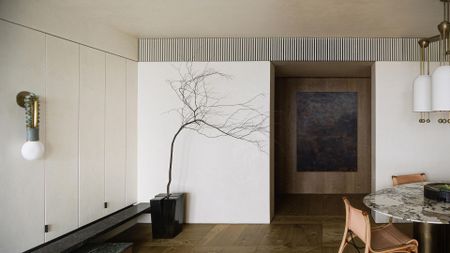 The 'Decluttering Scavenger Hunt' Turns This Household Chore Into a Game (That You Could Totally Play With the Kids Today)
The 'Decluttering Scavenger Hunt' Turns This Household Chore Into a Game (That You Could Totally Play With the Kids Today)The 'gamification 'of decluttering might just make clearing your clutter more tolerable — this is a solution for all the task-averse
By Amiya Baratan Published
-
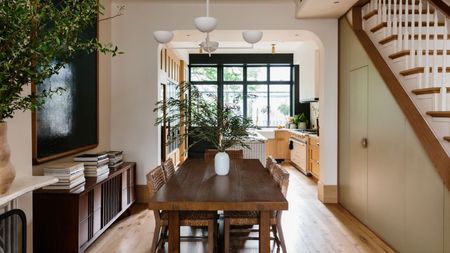 A Bathroom Under the Stairs Is the Game-changing (but Tricky-to-Pull-Off) Small-Space Hack — What You Need to Know
A Bathroom Under the Stairs Is the Game-changing (but Tricky-to-Pull-Off) Small-Space Hack — What You Need to KnowSqueezing in a powder room under your staircase will change the dynamic of your home for the better, but it's not the easiest to pull off
By Maya Glantz Published
-
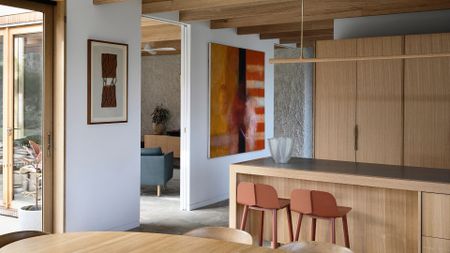 This 'Strict' 50% Rule Will Help You Cut Your Home's Clutter in Half (Even If You're a Sentimentalist)
This 'Strict' 50% Rule Will Help You Cut Your Home's Clutter in Half (Even If You're a Sentimentalist)Is this rule strict? Maybe. Successful? Absolutely.
By Amiya Baratan Published
-
 How to Care for a ZZ Plant — Do This If You Want Lush, Green Foliage in Your Home
How to Care for a ZZ Plant — Do This If You Want Lush, Green Foliage in Your HomeFrom temperature to soil requirements, this expert guide holds all the information to care for this stylish houseplant successfully
By Amiya Baratan Published
-
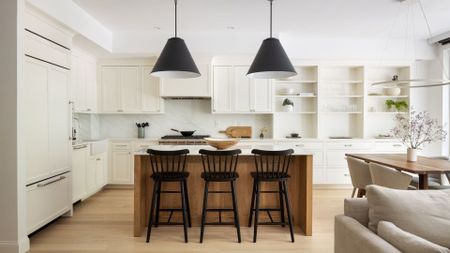 I'm Taking on This Decluttering Challenge for Lent — 40 Items to Say Goodbye to in 40 Days
I'm Taking on This Decluttering Challenge for Lent — 40 Items to Say Goodbye to in 40 DaysDuring lent, we recommend taking part in this decluttering challenge to pare back your home and have it Easter-ready. So here are 40 things to start with.
By Amiya Baratan Published
-
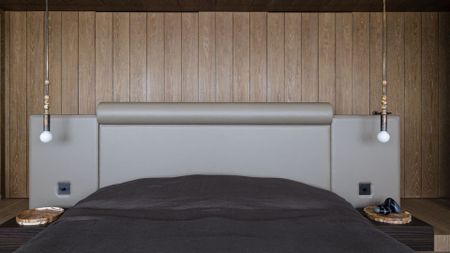 3 Things That Really Matter When Choosing Your Headboard If You Want a Bedroom With Good 'Energy'
3 Things That Really Matter When Choosing Your Headboard If You Want a Bedroom With Good 'Energy'When it comes to picking the perfect headboard, here are three key concepts to keep in mind for good Feng Shui
By Amiya Baratan Published
-
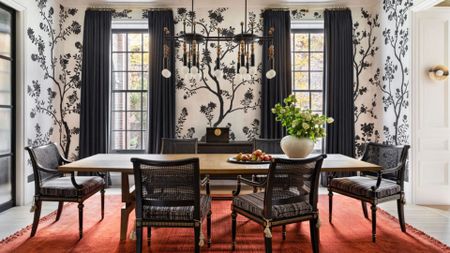 9 Things You Can Do to Organize Your Dining Room That Will Make the Whole Space Work So Much Better
9 Things You Can Do to Organize Your Dining Room That Will Make the Whole Space Work So Much BetterThese nine expert-approved organization tips will take your dining room from messy to guest-ready in no time
By Amiya Baratan Published
